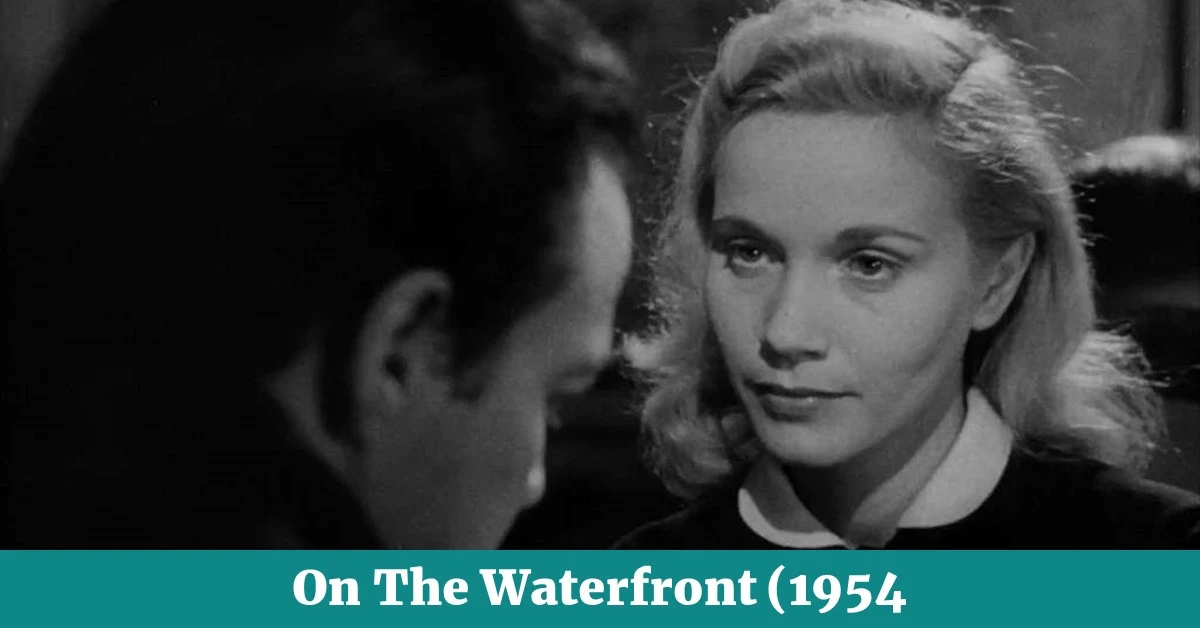Last updated on June 15th, 2024 at 10:51 am
On The Waterfront (1954) is a romantic drama film that portrays a relationship between a convent nurse, Edie, and a prize-fighter turned longshoreman, who helped his corrupt bosses kill her brother.
Conscience-driven, Terry could not stand the crimes and corruption committed by docker union bosses, among whom was his older brother. It won one Oscar as Best Picture.
Being a first-hand witness to the crime, Terry found it hard whether to continue his relationship with Edie by testifying to the court on the killing or remain dumb-and-deaf (D&D) by working under them who killed his older brother for failing to dissuade him from testifying against them.
Edie, the younger sister of Joey Doyle, fell in love with Terry while looking for her brother’s killer. Johnny Friendly, one of the Union bosses, killed Joey Doyle because he was talking to the Crime Commission about the bosses’ crime and corruption.
Terry’s brother, the right hand of the boss, chose to get killed instead of killing his younger brother who was helping Edie to find her brother’s killer. Like Prison Break (2008) and The Conviction (2010), On the Waterfront (1954) is also a wonderful account of how far a sister or a brother can go for a brother.
One of the most celebrated television series Prison Break (2208) shows how far can a brother, Michael, go for his brother, Lincoln Barrow. Lincoln Barrow was unjustly convicted and sentenced to death, for killing the brother of the President. Lincoln was on the death row and waiting to be executed by an electric chair when his younger brother, Michael Scofield, committed a bank robbery only to be convicted and imprisoned in the same prison.
The justice system and the politics were so polarized that Lincoln’s younger brother, Michael, determined to break him out of the prison. To execute his plan Michael drew the entire structure of Fox River Penitentiary, where Lincoln is serving, under the guise of a whole-body tattoo.
He had his body tattooed in infinitesimal details and in one morning went to a nearby bank to rob.
In the act of robbery, Michael waited until the police came and arrested him. Once arrested Michael refused to appeal and therefore was sent to the same prison where his brother Lincoln was serving his term. There, along with other notorious masterminds, Michael ingenuously played the mind game in the possible smartest way. After numerous attempts and sacrifices for his brother, he finally was able to save him from execution.
Michael’s love for him was so genuine and sincere that, during his serving even when he was told that Lincoln was not his biological brother his stance and view regarding Lincoln could not be altered by the slightest point. He fought and loved his brother exactly the way he would love and care for his biological brother. Another piece of film is about how far a sister can go for her brother who was unjustly convicted and awarded life-term.
Based on the actual events, in Conviction (2010) we see how a sister who grew up together with her younger brother in a dysfunctional family in Ayer, Massachusetts became an attorney and proved her convicted brother innocent.
Broken and devastated after her elder brother Kenneth Waters’ conviction by the court, Betty Anne Waters, a high school dropout and a working mother enrolled herself in law school to become a lawyer to fight for him. Kenneth was framed by the local police head and was serving life-term imprisonment in 1983.
Kenneth was convicted as the killer of a woman in the locality. In order to cover up the real killer, the head of the Ayer Police Department arrested Kenny for question, but was released in a few hours. However, the case had been reopened two years later with witnesses. Because of sufficient witnesses, including Kenneth’s former girlfriend and exhibits, the court sentenced him life imprisonment.
Devasted, his sister who just got married, believed his innocence. During her visit to Kenneth, she promised him that she would become a lawyer and fight for him, and prove him innocent. After a GED and when she finally made it to law school, it had already been ten years of Kenny’s serving in the prison. By the time she became a lawyer and passed the bar and got ready to fight, she was informed that the evidence related to Kenneth Waters’s case had been destroyed. Because it was customary to destroy any evidence after ten years.
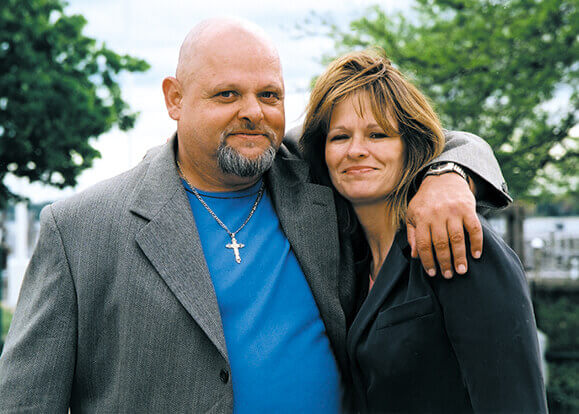
After sixteen years, in 1999 Betty came to know for the first time that there was a DNA test in the states, and thought that could be a chance as evidence. Therefore, to find the blood evidence, she sought help from Barry Scheck, who owns the Innocence Project, a non-profit legal organization, committed to exonerating individuals who it claims have been wrongly convicted, through the use of DNA testing, in New York. She wrote to him that her brother can be exonerated through DNA evidence.
Ayer Police Department said the evidence had been destroyed and suggested Betty to check with the courthouse. Betty was able to convince the clerk of the courthouse to check if the evidence still existed. Luckily, she found the evidence and exhibit there while she applied for a DNA test. Even though the test came negative the District Attorney of Middlesex country refused to release Kenneth on the grounds that it needed new evidence.
The state of Massachusetts did not have the death penalty then. In 1983 there was no DNA filing. Pressured by the head of the police department of Ayer, the witness gave false testimonies. Kenneth Waters spent 18 years in prison as a result of a false testimony and police anomalies.
Kenneth’s release was possible only if the witnesses recanted their statements. After getting the DNA testing ready, Betty’s, friend Abra and Barry confronted the witnesses and had a new statement signed that their previous statements were false. Thereby, Kenny was exonerated after 18 years of imprisonment.
For Betty in order for her to get ready to fight the case, it took 18 years, it costs her family, she was divorced and after all, a woman who never planned to be a lawyer became an attorney just because of her love for her brother. An impossible possible but doable feat that took her a lot of patience who considered nothing more dearly than her brother.
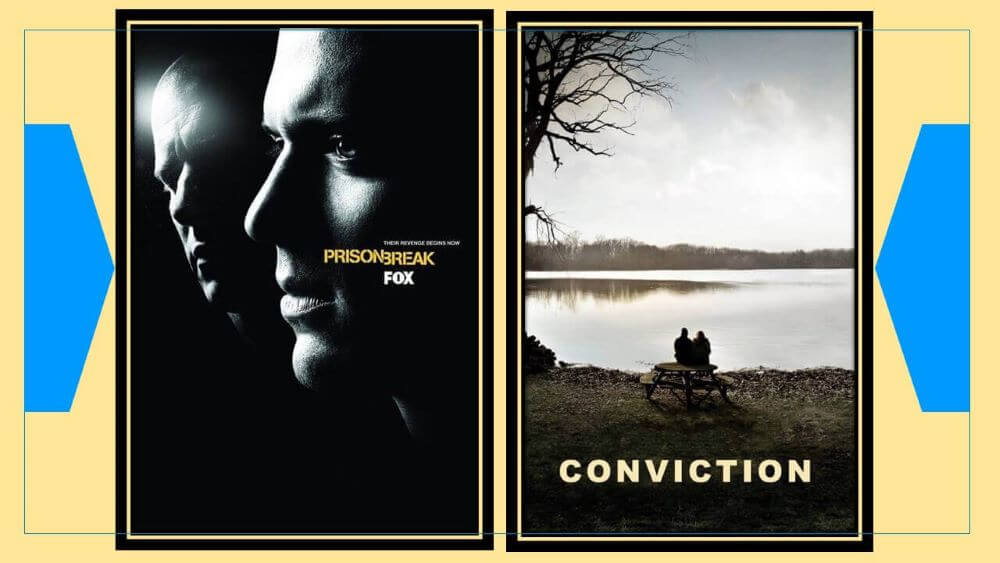
Storyline: On the Waterfront (1954)
Terry was told to set Joey up for the knock-off from the rooftop of his apartment where he had a pigeon loft. After Joey was killed Terry was utterly shocked and disgusted. Because he thought the mob would just threaten him a little bit or straighten him up, but rather they killed him by throwing him off the roof. Terry feared that if he opens up his mouth about the incident, he was worth nothing to the mob who brought him up and of which his elder brother, Charlie, was also a part.
Longshoreman union–docker union– mob killed Joey Doyle to control the docking job. Johnny Friendly the boss used Terry to set Joey. When Joey went to the rooftop to look after his pigeons, Jonny’s men threw him off the roof. Joey was testifying against the boss to the crime commission.
Joey’s father was one of the labourers on the dock. While only her vacation from her nursing college, Joey’s sister Edie Doyle determined to find out her brother’s killer. Father Barry from her convent also joined her by mobilisation of the dockers to stand for the truth. However, Terry fell in love with Edie and stunk with conscience, he decided to tell truth to the Father and Edie.
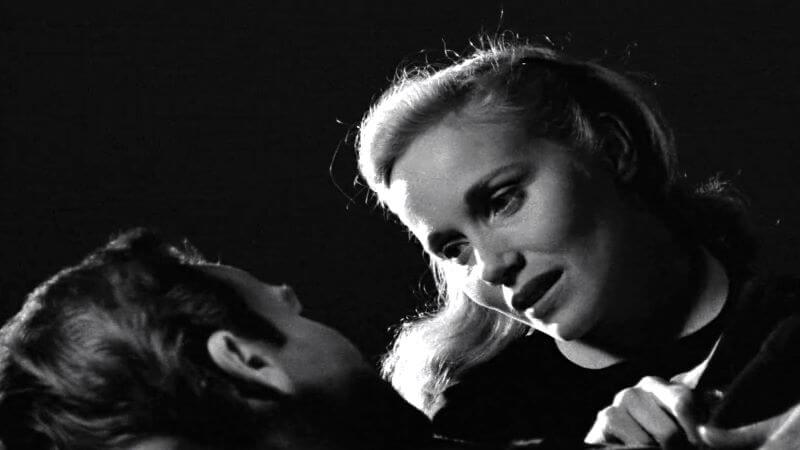
Johnny Friendly was frightened that Charley’s brother, Terry, might tell Edie about the killing of Joey. Terry was followed by an official from the Crime Commission and issued a subpoena. Johnny told him to drive him out of the place or straighten him or kill and get killed. He offered a job for $400 a week just to keep his mouth shut. Terry did not accept the offer.
Charlie was killed for failing to convince Terry or kill if refused. Instead of killing his kid brother, he got killed. Terry went after Johnny to kill him, but Father Barry told him that killing Johnny would not be an act of bravery but to fight him in the court of law would be.
In court, Terry testified that Johnny killed Joey. Indicted, he threatened to kill Terry. The next day Terry went to the waterfront for work, but he was not given work. Terry invited Johnny for fighting. When Johnny and his accomplices left Terry half-dead. But the timely intervention of Father Barry and Edie helped him stand on foot.
None of the workers was willing to work to unload the ship while Terry was down. But when Father and Edie helped him to walk and Terry commanded them to go to work, all of them followed him, which made him the boss over Johnny.
By the help of moral and spiritual support from the Father and his love for Edie drove him to make a choice over crimes committed by the longshoreman mob, and did not sell his soul for the fortune at the expense of his conscience.
To the question about why should she care about his life, Edie threw him the question the entire humanity has forgotten to ask, “Shouldn’t everybody care about everybody else? I mean, isn’t everybody a part of everybody else?” On the other hand, Terry replied to her comment about him for not having “a spark of sentiment or romance or human kindness”, and “What good does it do you besides getting you in trouble?” The truth be told is that kind-hearted and honest people are victimised most of the time.
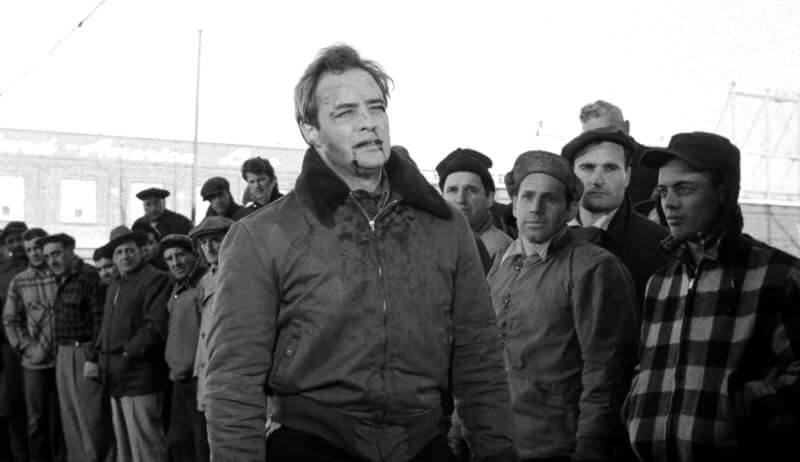
Remark
Director Mr. Elia Kazan has always believed in the film as a weapon in the struggle for social reform and has never regarded it solely as a form of entertainment.
He is well aware of its ability to demonstrate evils in the body politic and the miseries that flow from those evils—not the most cunningly written pamphlet can, in immediate effectiveness, rival the visual illustrations supplied by the moving camera—and so it is no surprise to find that On the Waterfront, at the Gaumont Cinema, is directed towards the end of exposing the exploitation dock workers suffer at the hands of unscrupulous union bosses who “bump off” those who refuse to comply with the approved manner of Chicago gangsters of two or three decades ago. At least that is what the film says they do, and the film carries conviction.
The New York waterfront is a grim place, and On the Waterfront is a grim film which pulls no punches and makes no concessions.
Indeed, so successful are the camera and Mr Kazan’s direction in reproducing the atmosphere of the docks and the slums bordering on them that the use of noisy incidental music crudely to underline episodes in the action becomes more difficult to forgive. The sound track, except when the dialogue and the natural background noises of the docks are in command, belongs to an inferior type of melodrama—and that On the Waterfront is not.
Mr. Marlon Brando’s Antony is still fresh in the mind, and here once again is a performance of unusual power, power holding within it a menace which broods at the flash-point of violence.
Terry is a dock worker who has done some boxing in his time and is in the favour of the union boss (Mr. Lee J. Cobb). Terry knows of the things that happen, but the knowledge does not touch his consciousness until he meets the sister (Miss Eva Marie Saint) of one of his friends, a man who is pushed off a roof by the boss’s orders.
The rest of the film shows the light that is in the character of the girl playing on the insensate thunder-cloud which is Terry’s substitute for a mind, and very subtle is Mr. Brando in suggesting slow processes of thought, gradual, painful mental decisions forming themselves in the void.
But the film is no easy exercise in the redemptive power of love; it keeps its feet firmly on the quays; it remains harsh and gritty to the end. There is a certain incoherence about it, which is perhaps deliberate.
Certainly, it matches the inarticulateness of Terry.
In theme and moral On the Waterfront is conventional but the direction is bold and creates a music of its own out of discords. Mr Brando sets a remarkable standard in acting, but not far behind him are Miss Saint, Mr Cobb, Mr Karl Malden, looking like Sir Ralph Richardson, as a fighting priest, and Mr. Rod Steiger, as Terry’s brother.
Conclusion
To speak about On the Waterfront (1954) and about its content, I have also a few other similar contents from the 2008 TV series Prison Break and the 2010 film Conviction.
I did so because I found it intriguing and fascinating how in nature the relationship between siblings is meant to be and should be. One for other, inseparable, passionate and committed.
We are in a very different world setting today, where infused by material and selfish intentions siblings kill siblings over property, money, games, arguments, family prejudice, love, love affairs and romantic feuds. Films like On the Waterfront (1954) show us how some people still consider sibling relationships to be sacrosanct or worth fighting for, no matter what they cost.
However, acted by Marlon Brando (as Terry Molloy), Lee J. Cobb (as Johnny Friendly), Karl Maldon (as Father Barry), Eva Mary Saint (as Edie) and others it is one of the 100 best films of my watch list.
